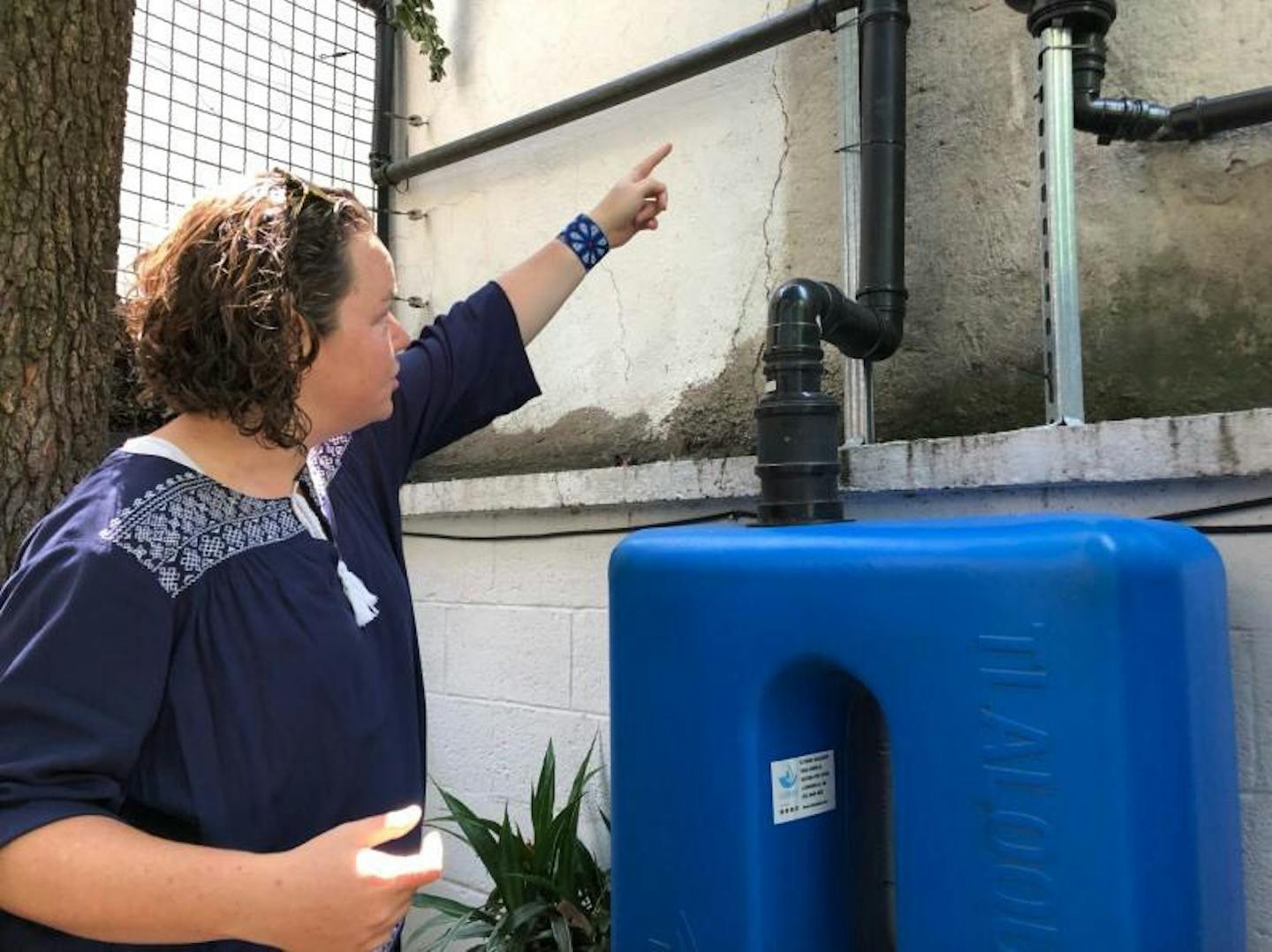Meet the NGO that is fighting Mexico City’s water crisis
The people behind the scenes
Every morning at 5 a.m., a fleet of Isla Urbana workers sets off to the same destination: a warehouse in Iztapalapa, Mexico City.
The warehouse is filled with the components of rainwater harvesting (RWH) systems. The workers must gather the parts they need, including a first flush diverter, a water tank, piping, and filters, so they can install RWH systems on the roofs of Mexico City houses.
Mexico City, with a population of 21.5 million people, is currently one of the most water-stressed cities in the world. Water stress occurs when the demand for water is higher than the amount of water that is available and when the poor water quality restricts its use.
Workers break off into teams, visiting homes they have visited at least twice before. The site visits before installation day help ensure that the surface and materials of the roof are appropriate, that the houses can structurally support a RWH system, and that there’s enough space to store the collected rainwater.
Ten years ago, Renata Fenton, Head of Design and co-founder of Isla Urbana, discovered that 20% of people in Mexico City had no access to water from the tap, that the aquifer that was supplying the city was drying up, and that 40% of the city’s water supply was being lost in leaks before it even reached the houses that needed it. Her undergraduate thesis alongside Enrique Lomnitz, General Director and co-founder of Isla Urbana, at the Rhode Island School of Design explored the potential of rainwater harvesting in Mexico and became the first step in what would ultimately become the social enterprise, Isla Urbana.
“In 2005, we researched informal housing settlements and interviewed people living in communities in the Ajusco region of Mexico City. This area was already suffering from water scarcity, people were receiving water once a week and spending 20% of their income purchasing water through other means,” Fenton recalled. “I expect we’re going to continue to see the critical water situation intensify in all areas of the city unless there’s a drastic shift in water management.”
A thirsty city
The stakes are high. The World Bank and Mexico’s national commission for water (also known as CONAGUA) expect water shortages in Mexico City to increase. Without a significant change, 30% of the city’s water supply will have to come from new sources by 2030. Currently, 36% of Mexico City’s population is getting water from the tap intermittently. Water stress is not only an obstacle to human development but also creates significant public health risks.
One of the easiest explanations for the water crisis is the way the current water system is set up. It has 322 km (200 miles) of primary conduits inside the city, 30% comes from the Lerma - Cutzamala system that brings water from 140 km (87 miles) away, and 70% is pumped up from the overexploited aquifer underneath the city. Every second, 40,000 liters (10,567 gallons) of waste is produced in Mexico City. This waste often makes its way into drinking water supplies. Additionally, changes in water pressure lead to water stagnation that compromises the quality of the water supply. In order to repair damaged and overused pipes, the government often shuts down the system that provides water to the city, restricting access to water even further.
In response to this crisis, Isla Urbana designed a RWH system that could address both the water shortage and water quality problems in Mexico. Isla Urbana’s small but ambitious team began their research in Mexico City’s most resource-strapped areas and created an RWH system tailored to meet these communities’ needs.

This leaf filter is part of Isla Urbana’s RWH system. On average, each household collects 45,000 liters of rainfall per year. This amount is enough to cover the needs of a family for 5-8 months.
Isla Urbana’s RWH system includes a custom-made first flush device called Tlaloque. The device was named after Tlaloc, the Aztec god of the rain, whose assistants collected rainwater from the hills and mountains in ancient times. When rainwater falls on a household’s roof, it’s channeled down into the Tlaloque which separates the first rain showers. This step reduces the water’s contamination by 70%. Water then flows through a leaf filter on its way to the water storage tank where disinfected and sedimented with the help of a floating chlorine dispenser and other components. From the water storage tank, water passes through a final sediment filter as it’s pumped to the rest of the house for its use.
All of Isla Urbana’s RWH system’s parts, except for one Israeli-made filter, are made in Mexico. Fenton hopes to make the rainwater harvesting system 100 percent locally sourced in the near future.
The road ahead
In 2009, Isla Urbana was installing one rainwater harvesting system each month. Now, ten years later, it’s installing around 50 systems per day. As part of its collaboration with the Ministry of Environment (SEDEMA), Isla Urbana installed 10,000 RWH systems in Iztapalapa and Xochimilco just in 2019. This milestone means that thousands of households that are not connected to the city’s water grid will reduce their reliance on the expensive trucks they currently depend on for water.
Fenton says that's the most important impact on families that now use this system.
Another issue that exacerbates the existing problems around water accessibility, is that climate change has made rain patterns more difficult to predict. Climate change has also increased the possibility of flooding which suggests that better rain management could decrease disasters.
Fenton says her team needs to keep these environmental factors in mind when they design their rainwater capture systems going forward.
Fenton also describes how in climate-induced disasters, such as the earthquake that hit Mexico City in 2017 and killed more than 200 people, RWH systems have literally saved lives.



